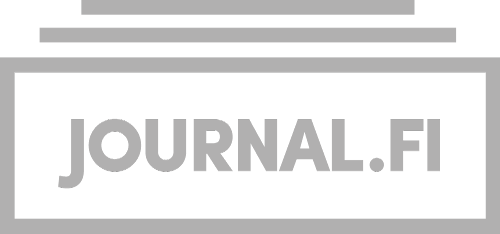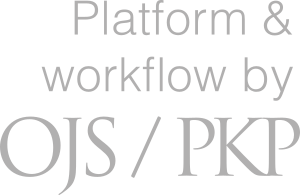Figurative Verben in der alltäglichen Wissenschaftssprache des Deutschen
Eine korpuslinguistische Pilotstudie
Keywords:
Deutsch als Wissenschaftssprache, wissenschaftssprachliche Verben, Korpuslinguistik, Figurativität, Deutsch als FremdspracheAbstract
Expressions such as ‘einer Frage nachgehen’, ‘ein Beispiel heranziehen’ or ‘an einem Beispiel etw. sehen’ are common in academic German. Interestingly, the verbs in such expressions are often – in part (e.g. gehen, ziehen), or as a whole (e.g. sehen) – derived from everyday language and they have developed a figurative meaning from a concrete origin. The seemingly ‘easy’ base forms often belong to the most frequent German verbs (Jones & Tschirner 2005) and are encountered relatively early by learners of German as a foreign language. However, studies concerned with English as a foreign language (Altenberg & Granger 2001, Lennon 1996) point to the difficulties that even advanced learners have with such verbs due to their polysemy and their occurrence in similar lexical forms, that is, in products of word formation. These figuratively used words or expressions are considered to be an essential characteristic feature of academic German (e.g. Graefen 1997, Hund 1999, Fandrych 2004), distinguishing it from other languages. Fandrych (2001, 2002, 2005) compared text commenting devices in both academic German and English. His results point to a difference between these otherwise closely related languages with respect to academic lexis: while English draws more on vocabulary of Latin-Roman origin, German derives words from everyday language.
However, previous studies are based on a rather limited data base and do not provide any quantitative information about this type of German academic vocabulary. A comprehensive empirical study is needed to verify the observation, especially with regard to the importance of this lexis for learners of German who wish to study in Germany.
In this paper a corpus-linguistic pilot study is presented which aims to empirically examine the contention that such figurativeness is a central feature of academic German. The term figurativeness in the context of academic language is used with respect to phenomena of meaning transfer and meaning extension from concrete to abstract. That is, the perspective of cognitive linguistics is adopted which sees figurative expressions as means of conceptualizing the abstract in terms of the concrete and not just as ornamental figures of speech (e.g. Sweetser 1990). The analysis focuses on verbs, whose figurativeness is assessed according to the following criterion: a verb used in academic texts is considered figurative if the verb as a whole or its verbal base also has a concrete meaning, that is, they denote a physical activity or perception (compare ein Beispiel geben, einen Begriff kritisch betrachten or auf eine Frage eingehen, eine Entwicklung darstellen).
With regard to the types of vocabulary in academic texts the verbs under study are part of what Ehlich has called 'alltägliche Wissenschaftssprache', that is, lexical items derived from everyday language that are used in a similar way in most disciplines (Ehlich 1993).
The study aims to shed light on three questions: First, what is the proportion of figurative verbs in academic German and to which semantic fields do the base verbs belong? Second, does the concrete meaning of the base contribute to or is reflected in the meaning of the derived verb used in academic language? Third, in which way do everyday uses and academic uses of a verb differ?
These questions are examined on the basis of two corpora of written academic German: The first corpus is the academic part of the Herder-BYU (Tschirner & Jones 2005). It comprises about 1 million tokens from a range of academic disciplines and genres. It is divided into three subcorpora: humanities, science, and law/business/technology. The second corpus is a 1.2 million token corpus of research articles collected from various German language and literature studies journals. This corpus also consists of three subcorpora: literature studies, linguistics, and applied linguistics/German as a foreign language.
What is the proportion of figurative verbs in academic German and to which semantic fields do the base verbs belong?
To answer this question a sample was compiled from the two corpora. To empirically meet the criteria of alltägliche Wissenschaftssprache and to not introduce any other a priori restrictions, the sample of verbs was designed in an indirect way. First, all nouns were captured that occurred in the two corpora with a frequency of at least 100 times per subcorpus. These requirements were met by 16 nouns (Arbeit, Art, Bedeutung, Begriff, Beispiel, Entwicklung, Fall, Form, Frage, Grund, Jahr, Mensch, Möglichkeit, Sinn, Teil, Zeit). The sample of verbs then comprised all verbs that occurred together with these nouns. In the pilot study only those verbs were analyzed that occurred in conjunction with the following five nouns: Arbeit, Begriff, Beispiel, Frage and Teil. The quantitative analysis suggests that figurative verbs can indeed be regarded as a characteristic of academic German: In the pilot sample these verbs covered more than 50% (i.e. about 55% of the corpus of research articles and about 51 % of the academic Herder-BYU). Furthermore, it turned out that these verbs fall into seven groups according to the semantic fields to which the base verbs belong: verbs of motion and caused motion (e.g. einer Sache nachgehen, etw. auf etw. beziehen), verbs of posture and caused posture (e.g. entstehen, etw. feststellen), verbs of transfer (e.g. etw. angeben, etw. annehmen), verbs of showing (e.g. etw. zeigen, auf etw. hinweisen), verbs of grasping (e.g. etw. aufgreifen, etw. zusammenfassen), verbs of connecting and separating (e.g. etw. mit etw. verbinden, etw. von etw. trennen) and verbs of perception (e.g. etw. als etw. sehen, etw. betrachten).
Does the concrete meaning of the base contribute to or is reflected in the meaning of the derived verb used in academic language? To answer the second question, a group of prefix verbs of the form ‘über + verb of motion’ (übergehen, überschreiten, überspringen and übersteigen) was examined. The occurrences of these verbs in the corpora under study suggest that the choice of the root motion verb is not arbitrary with respect to the meaning and usage of the derived verb in academic German.
In which way does everyday use of a verb differ from academic use? Looking more closely at the verb ‘(einer Sache) nachgehen’ by comparing its academic uses with its occurrences in the non-academic parts of the Herder-BYU corpus (i.e. literature, newspapers, everyday prose and spoken German), it turned out that this verb has developed a special function in academic texts, especially in (German language and literature studies) research articles. There it is most commonly used to comment on the organization of the text, e.g. to announce forthcoming topics, or to refer to the work of other researchers. This metalinguistic function is reflected in the co-occurrence of nachgehen with deictic expressions such as hier, im Folgenden, in diesem Beitrag or with references. The typical co-occurring object of the verb in this context is the noun Frage. In contrast to this specific function, the occurrences of nachgehen in nonacademic texts hardly ever exhibit this text-commenting pattern.
The results are finally discussed with respect to possible applications in teaching academic German. It is suggested that special emphasis should be given to the form of verbs. A characteristic of German academic verbs is the occurrence of the same prefix and base forms in numerous complex verbs with different meanings (e.g. eingehen auf, ausgehen von, angehen, hervorgehen aus / zurückgehen auf, zurückkommen auf, zurückführen auf, zurückkehren zu, zurückverfolgen, zurückgreifen auf). Most of the bases of these complex verbs belong as simplex to the most frequent German verbs (cf. Jones & Tschirner 2005). Their basic meanings will be encountered relatively early in learning German. But, as studies have shown (e.g. Lennon 1996, Altenberg & Granger 2001), these frequent and ‘well known’ words often pose difficulties for advanced learners. Laufer (1997, 2000) has introduced the term of deceptive transparency for cases in which part of a complex word seems to be familiar to the learner and therefore the word as a whole does not receive special attention, which may lead to misinterpretation. Focusing on the form of these verbs, speculating about the derived meaning and working out the specific functions in academic texts may help learners in coping with the vocabulary of academic German.
Downloads
Published
Issue
Section
License
Copyright (c) 2009 Cordula Meissner

This work is licensed under a Creative Commons Attribution 4.0 International License.
Author’s Warranty and Publication Agreement
The corresponding Author (hereafter Author) hereby warrants on behalf of all the authors (hereafter author(s)) that the manuscript here submitted to the journal Apples - Journal of Applied Language Studies is original and has not been published or submitted to publication elsewhere in part or in whole. The Author also commits not to send the manuscript for consideration elsewhere while the article is being processed by Apples - Journal of Applied Language Studies. The Author also warrants to have the full authority to submit the article. Apples will not accept a manuscript for which the copyright is held by a third party. The Author also warrants that the article contains no libelous or unlawful statements, and does not infringe on the rights of others. If the article contains any material protected by the copyright of others, the Author must deliver a written permission from the copyright owner(s) to reproduce such material in the article.
The Author also understands that:
1. The Author hereby agrees that the Publisher (the University of Jyväskylä, Centre for Applied Language Studies) has the right to publish, distribute, display and copy the article. When the manuscript is ready for publication, it will be published at Publisher's own expense and under the Publisher's name. The author(s) retains the copyright to the article.
2. The Author understands that no royalties or remuneration will be paid by the Publisher to the author(s) for the above-named submitted manuscript.
3. The Author is responsible for the content, originality and integrity of the article, and will indemnify and defend the Publisher against any claim, demand or recovery against the Publisher by reason of any violation of any proprietary right or copyright, or because of any libelous or scandalous matter contained in the manuscript.
4. The publisher will have the right to edit the work, provided that the meaning of the text is not materially altered.
5. The publisher has the right to end the service of the journal Apples - Journal of Applied Language Studies or alter it at any time and for any cause without liability to the author(s).
6. The Author understands that the article will be published openly on the Internet and, after publication, anyone has the right to copy, distribute and display the work freely as long as it is for nonprofit purposes, and the original author(s) is given credit and Apples - Journal of Applied Language Studies is named as the original publication.
7. This Agreement, whenever called upon to be construed, shall be governed under Finnish law.
8. The parties to this Agreement consent and agree that all possible disputes will be resolved primarily by negotiations. If needed all legal proceedings relating to the subject matter of this Agreement shall be maintained in Jyväskylä district court.
9. This Agreement cannot be modified except by a written instrument signed by the parties hereto.
10. This Agreement shall be binding upon the parties hereto, their heirs, successors, assigns and personal representatives.
11. If the Article was prepared jointly with other authors, you warrant that you have been authorized by all co-authors to sign this Agreement on their behalf, and to agree on their behalf the order of names in the publication of the Article. You shall notify us in writing of the names of any such co-authors.
If the article includes material from other copyrighted sources, the Author agrees to send the relevant permissions to Apples editors (address below).
If the article include illustrations in which a person can be recognized, the Author agrees to send the relevant permissions to Apples editors (address below).
Apples – Journal of Applied Language Studies
Centre for Applied Language Studies
P.O. Box 35
FIN-40014 University of Jyväskylä, Finland
Email apples@jyu.fi





